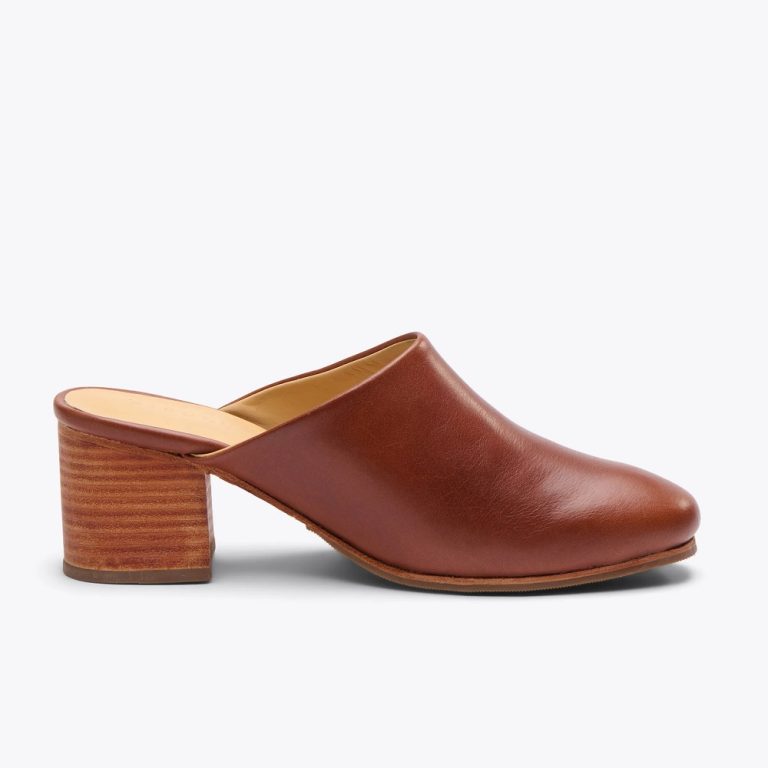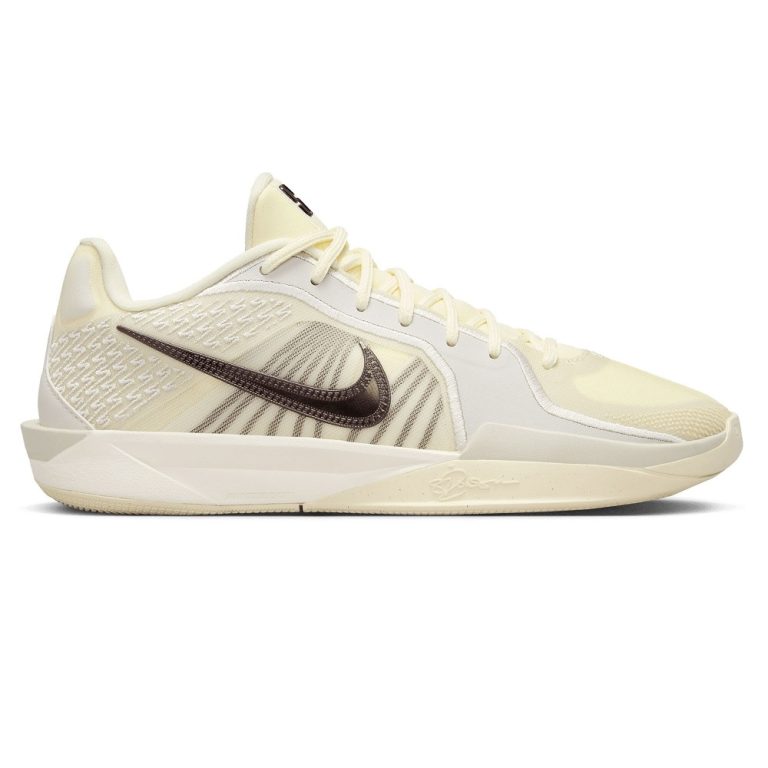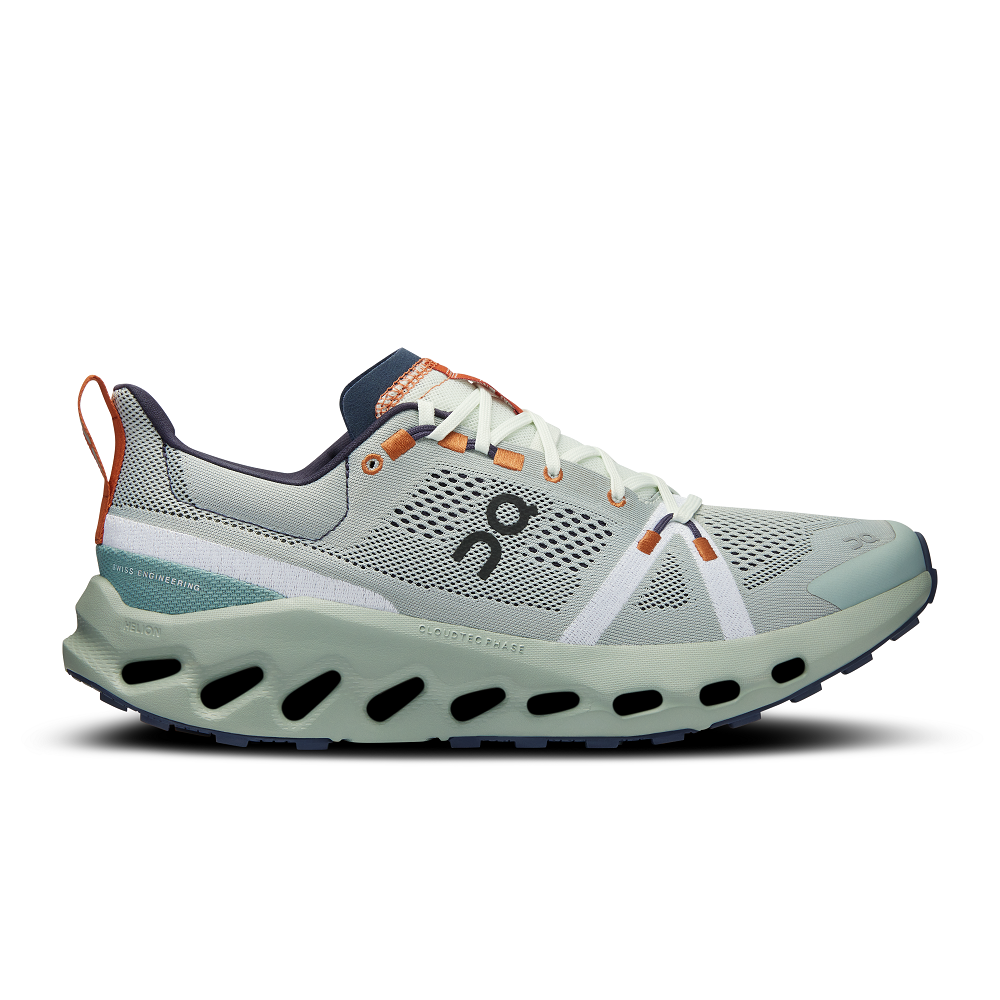
Best Men’s Trail Running Shoes: Top Choices for Any Terrain
What to Look for in Trail Running Shoes
Selecting the best men’s trail running shoes is crucial for safety and performance. Trail running shoes are designed to handle uneven terrain, provide traction, and protect your feet. Understanding what features to prioritize helps ensure a comfortable and efficient trail running experience.
Key Features for Trail Performance
When buying the best men’s trail running shoes, look for these essential features:
- Traction: Shoes with lugs or rubber outsoles improve grip on loose or slippery terrain.
- Durability: Materials like ripstop nylon and reinforced toe caps protect against wear and tear.
- Cushioning: Provide enough cushioning to absorb shocks, but avoid bulk if you prefer speed.
- Protection: Features such as rock plates shield feet from sharp rocks.
- Fit: A snug fit ensures stability, especially on uneven trails. Avoid overly tight designs.
- Water Resistance: Waterproof or water-resistant materials keep your feet dry in wet conditions.
- Breathability: Proper ventilation prevents sweating and overheating on long runs.
Each feature plays a role in improving your safety, comfort, and efficiency.
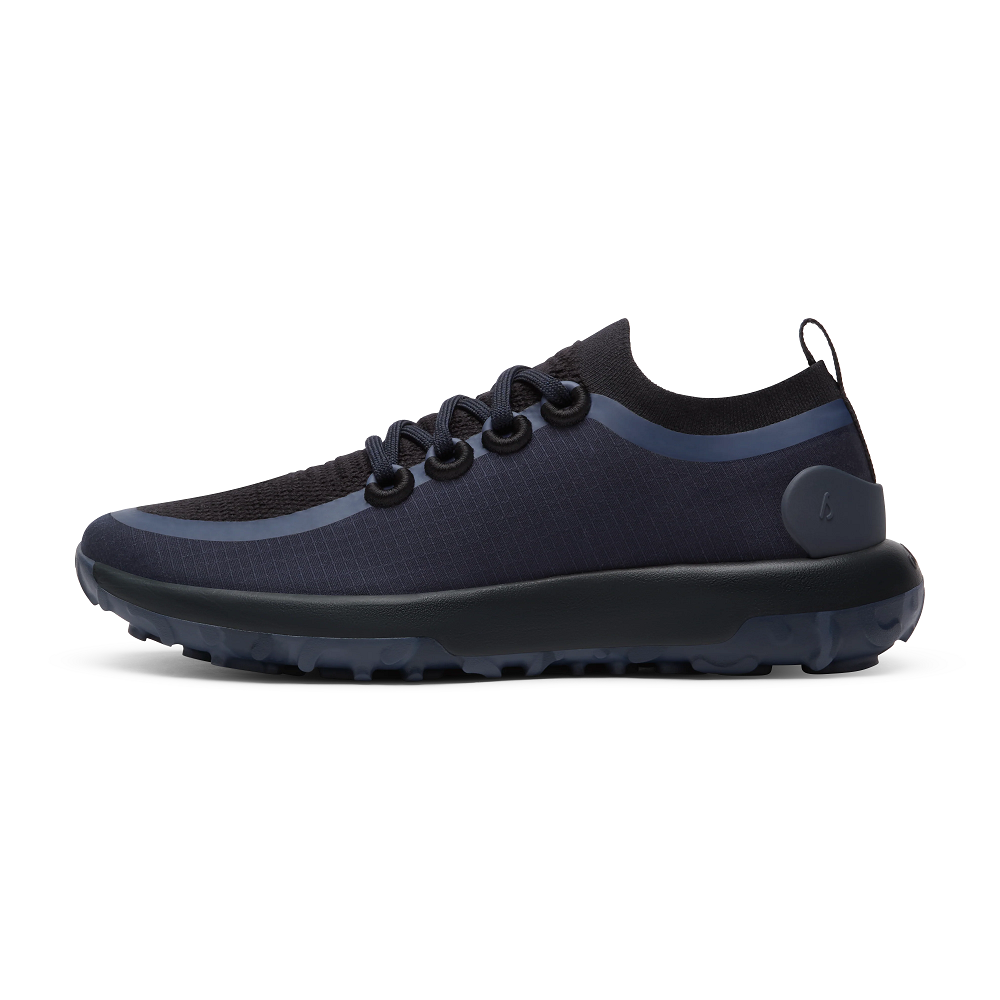
Differences Between Trail and Road Running Shoes
Trail running shoes differ significantly from road running shoes. Here’s how:
- Outsoles: Trail shoes have rugged soles for better grip on dirt and mud. Road running shoes have smoother outsoles designed for pavement.
- Weight: Trail shoes are slightly heavier for added durability and protection. Road running shoes are lighter for speed.
- Cushioning: Trail shoes balance cushioning with responsiveness to handle uneven trails. Road shoes focus more on comfort for repetitive strides on hard surfaces.
- Upper Materials: Trail shoes use stronger materials to resist tears and provide foot protection. Road shoes often feature lightweight, highly breathable fabrics.
- Stability: Trail runners have enhanced stability features to prevent ankle rolls on uneven surfaces.
Choosing trail-specific shoes ensures optimal performance on off-road adventures. Carefully consider these differences when planning your runs.
Top Trail Running Shoe Brands
Choosing the right brand makes a big difference in trail running performance and durability. Today’s market offers a mix of established and emerging names, ensuring runners have an array of options.
Popular Brands for Quality and Durability
Some brands consistently deliver high-quality trail running shoes. Here are a few trusted names:
- Salomon: Known for exceptional traction and durability. Salomon shoes are ideal for rugged terrains.
- Brooks: Offers reliable cushioning and support for long trail runs.
- Hoka One One: Famous for its maximal cushioning and comfort for tough trails.
- Merrell: Features protective designs and excellent grip for rocky paths.
- La Sportiva: Provides superior stability and performance on steep or technical trails.
These leading brands focus on innovative designs, ensuring a safe and comfortable running experience.
Emerging Brands to Watch
Newer brands are gaining popularity and bringing fresh ideas to trail running gear:
- Altra: Specializes in natural foot positioning with zero-drop designs.
- On Running: Combines lightweight builds with unique cushioning technologies.
- SCARPA: Excels in creating shoes for mountain-focused trail running.
- Dynafit: Renowned for lightweight and weather-resistant trail shoes.
- Topo Athletic: Offers wide toe boxes and specialized for faster runs.
Emerging brands often push innovation, giving trail runners exciting new options to explore.
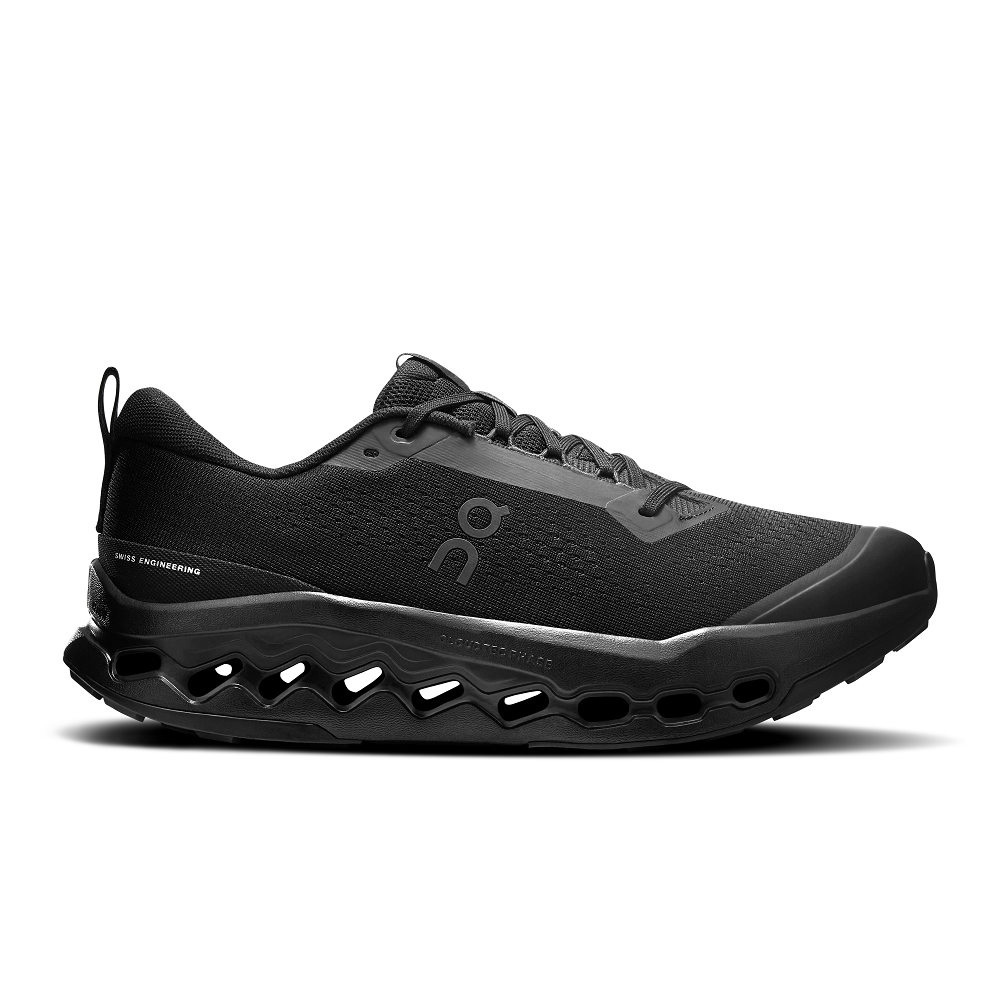
Best Men’s Trail Running Shoes for Different Terrains
Finding the best men’s trail running shoes depends largely on the terrain you’ll be navigating. Different surfaces demand specific features to ensure safety, comfort, and performance.
Shoes for Rocky and Rugged Trails
Rocky and uneven trails require extra protection and stability. The best choices will include:
- Durable Outsoles: Look for shoes with thick rubber outsoles and deep lugs for maximum grip.
- Reinforced Toe Caps: These shield your toes from sharp rocks and unexpected bumps.
- Rock Plates: Protect the bottom of your feet from jagged stones and uneven terrain.
- Stable Fit: Shoes with a snug but comfortable fit keep your footing stable on rugged climbs.
Ideal options for rocky trails include brands like Salomon and La Sportiva, known for their durability and technical designs.
Shoes for Muddy and Wet Trails
Wet terrains demand shoes that provide traction and keep your feet dry. Key features include:
- Waterproof Materials: Gore-Tex or water-resistant fabrics prevent water from soaking through.
- Aggressive Tread Patterns: Deep lugs and sticky rubber enhance grip in mud and slippery areas.
- Quick-Drying Uppers: Lightweight and breathable materials help to dry quickly during wet runs.
- Secure Fit: Avoid loose designs that can slip or trap water inside the shoe.
Brands like Merrell and Hoka One One offer excellent waterproof and weather-resistant trail shoes for muddy trails.
Shoes for Dry and Sandy Trails
Dry or sandy surfaces demand lightweight shoes for agility and proper traction. Look for:
- Wide Toe Box: Provides comfort as your feet expand in hot conditions and loose sand.
- Breathable Materials: Ensure proper ventilation to stay cool during warm and dusty runs.
- Lightweight Design: Shoes with minimalist builds offer speed and agility on sandy terrains.
- Moderate Tread: Choose shoes with shallower treads for better movement in soft sand.
Altra and Topo Athletic are great choices for sandy trails, offering breathable designs with wide toe boxes.
Choosing terrain-specific trail running shoes enhances your running experience and keeps you safe on varied surfaces.
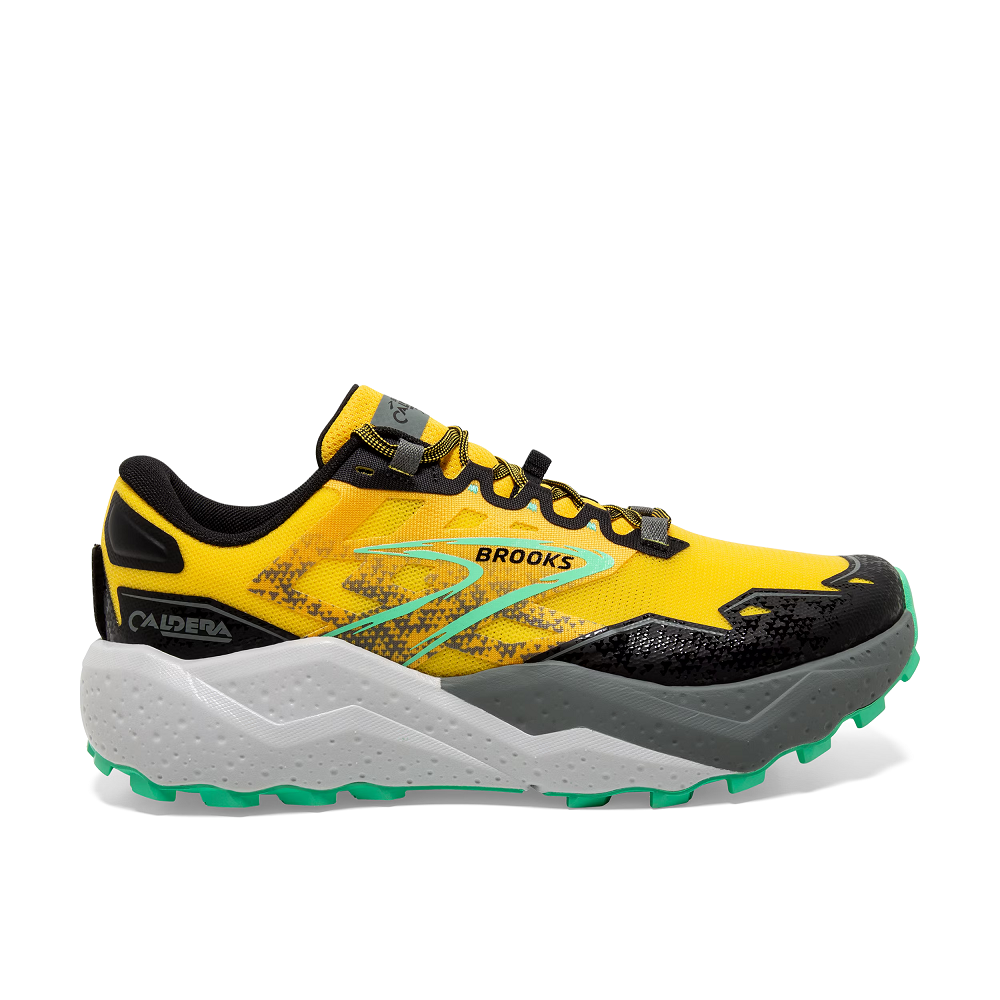
Cushioning and Support: Balancing Comfort and Performance
Trail running shoes must balance cushioning and support for optimal comfort and safety. Choosing the right type greatly affects your performance.
Minimalist vs. Maximal Cushioning
- Minimalist Cushioning: Designed for a lightweight feel, minimalist shoes offer a natural running experience. They prioritize responsiveness and are suitable for runners who prefer close-to-ground sensations. These shoes are lighter but may lack in shock absorption for rugged terrains.
- Maximal Cushioning: Maximal shoes have thick soles for shock absorption and comfort on long runs. They are ideal for runners seeking extra protection on rocky or uneven trails. Although heavier, these shoes reduce fatigue and provide added stability during descents.
Choosing between minimalist and maximal designs depends on your trail type and comfort preference.
Arch Support and Heel Stability
- Arch Support: Proper arch support ensures comfort and prevents injuries, especially for those with flat feet or high arches. Shoes with built-in arch support or customized insoles can make a significant difference.
- Heel Stability: A stable heel counter minimizes foot movement inside the shoe, preventing ankle injuries. Look for reinforced heel designs that keep your feet secure on uneven trails.
Balancing cushioning, arch support, and heel stability is essential for every trail runner. Evaluate your running needs to find shoes that enhance both comfort and performance.
Best Lightweight Options for Men
Lightweight trail running shoes are a great choice for those who prioritize speed and efficiency. These shoes strike a balance between performance and comfort, catering to runners who want to move quickly without added bulk.
Benefits of Lightweight Trail Running Shoes
- Increased Agility: Lightweight shoes allow faster movements, especially on technical and twisty trail sections.
- Reduced Fatigue: A lighter shoe means less effort is needed during long runs or races.
- Better Energy Efficiency: Less weight translates to improved energy preservation over extended distances.
- Greater Comfort: Minimalist designs reduce unnecessary bulk, helping runners stay comfortable on varied terrains.
- Improved Speed: Runners can accelerate more easily with less resistance from heavier shoe materials.
Lightweight shoes excel in sprints, races, and runs where speed and energy matter most.
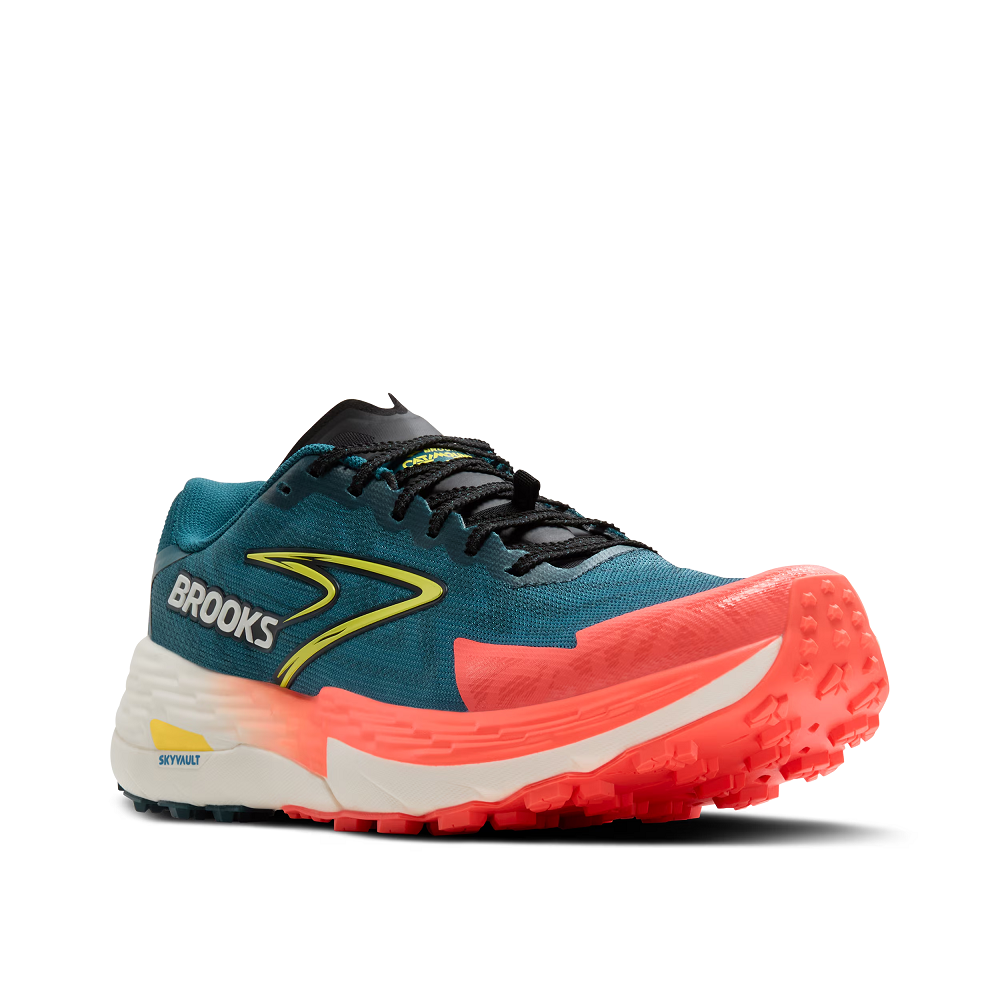
Top Picks for Speed and Agility
- Altra Superior 5: Known for its light build and zero-drop design, perfect for swift movements.
- Hoka One One Torrent 2: Combines lightweight construction with grippy outsoles for quick, stable runs.
- Salomon S/Lab Sense 8: Excellent for fast races, offering minimal weight and unmatched ground feel.
- La Sportiva Bushido II: Favors technical trails with a sleek, nimble build for added agility.
- Topo Athletic MTN Racer 2: Wide toe box and cushioned support make it ideal for lightweight performance.
Lightweight trail shoes are essential for runners seeking both agility and comfort in their footwear.
Waterproof and Weather-Resistant Trail Running Shoes
Trail running challenges can include wet, muddy, or unpredictable weather conditions. Waterproof and weather-resistant shoes ensure your comfort and safety in such scenarios. These shoes combine advanced materials with innovative designs to keep your feet dry and shielded.
All-Weather Options for Year-Round Training
All-weather trail running shoes excel in handling diverse climates and terrains. They are versatile and reliable for year-round use.
- Waterproof Uppers: Shoes with waterproof materials, like Gore-Tex, prevent water from penetrating the layers, keeping feet dry.
- Excellent Grip: Rubber outsoles with deep lugs ensure traction on slippery and wet surfaces.
- Durable Construction: Reinforced materials protect the shoes from wear in harsh weather conditions.
- Breathability Balance: Despite waterproofing, good ventilation prevents sweating during warmer runs.
Brands like Salomon and Hoka One One make great year-round options. They combine weatherproofing with comfort and durability.
Gore-Tex and Other Waterproof Technologies
Waterproof shoes often use advanced technologies designed to keep moisture out while maintaining breathability.
- Gore-Tex Membrane: This leading technology offers superior waterproofing without sacrificing airflow. It’s lightweight and versatile.
- eVent Technology: Another reliable waterproof option, providing exceptional breathability with weather protection.
- Coated Uppers: Some brands use water-repellent coatings as a lighter alternative to full waterproof membranes.
- Seam Sealing: Shoes with sealed seams offer added protection, ensuring no water enters through stitching.
Top picks for Gore-Tex or similar technologies include La Sportiva Ultra Raptor II GTX and Merrell Moab Speed GTX. Both models excel in waterproofing without compromising comfort.
Waterproof trail shoes help you face unpredictable conditions with confidence. Investing in these ensures enjoyable and stress-free trail runs.
Budget-Friendly Trail Running Shoe Options
Finding the best men’s trail running shoes on a budget is possible. Many options offer high performance at lower prices. By focusing on essential features and being resourceful, you can find shoes that meet your needs without overspending.
Affordable Shoes That Don’t Compromise Quality
You don’t have to break the bank for quality trail running shoes. Several brands offer reliable options at wallet-friendly prices:
- ASICS Gel-Venture 8: Provides good traction and cushioning, ideal for beginners exploring different terrains.
- New Balance Arishi Trail: Lightweight and breathable, great for light trail adventures.
- Saucony Excursion TR15: Offers a durable outsole and supportive fit, suitable for varied trail conditions.
- Adidas Terrex Agravic TR: Features excellent grip and water resistance, perfect for rugged trails.
- Merrell Trail Glove 6: Known for its minimalist design and natural foot feel at an affordable price.
When shopping for budget-friendly options, focus on essential features like durability, traction, and comfort. These features ensure performance without unnecessary additions that drive up cost.
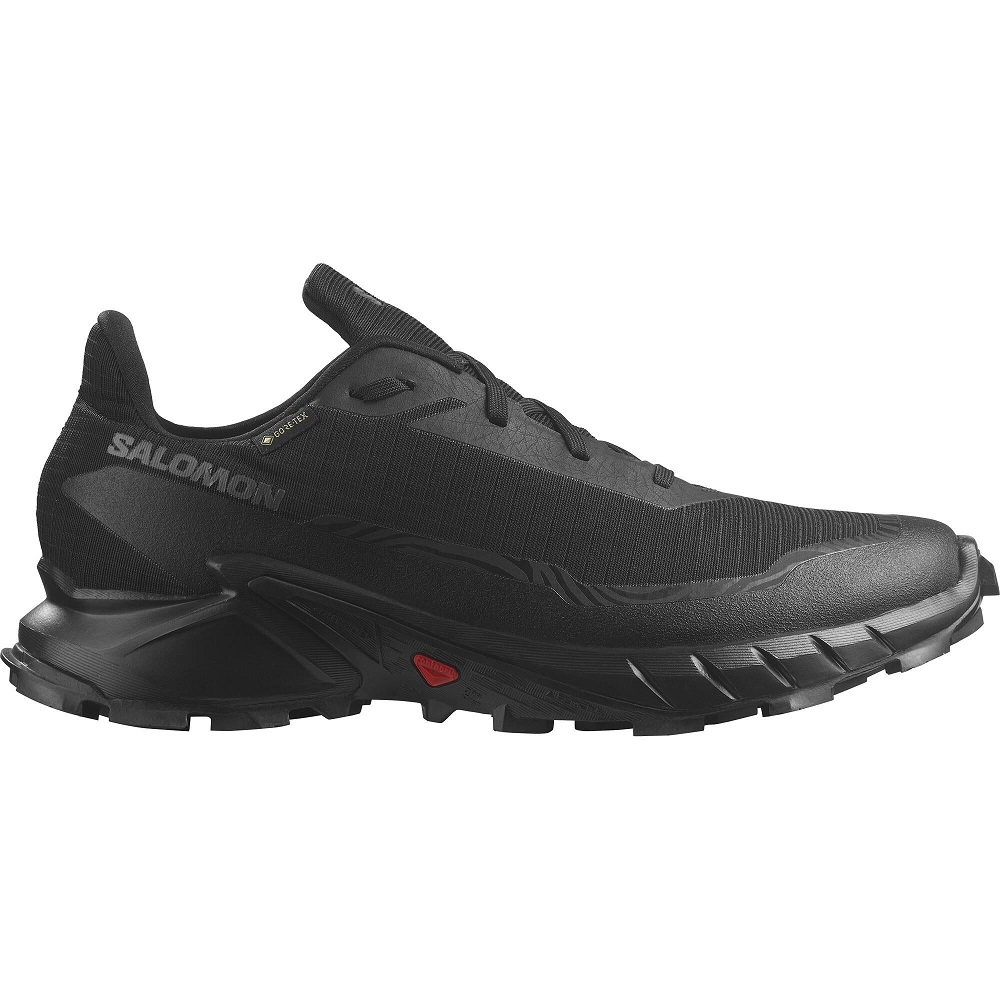
Finding Deals on High-End Models
High-end trail running shoes often go on sale or are available at discounted rates. Here are some practical tips to snag great deals:
- Shop Off-Season: Buy trail shoes during the off-season for significant discounts.
- Explore Outlet Stores: Brands like Salomon and Hoka often sell past-season models at lower prices.
- Look for Online Sales: Websites frequently offer deals, especially during holiday sales or clearance events.
- Consider Previous Models: Newly released shoes often replace older versions, which then go on sale.
- Join Loyalty Programs: Many stores offer discounts or early sale access for members.
With patience and strategy, you can own premium trail running shoes without overspending. Investing time in research and monitoring sales can lead to excellent savings.
Tips for Prolonging the Life of Your Trail Running Shoes
Best men’s trail running shoes are an investment. Proper care can extend their lifespan and maintain performance. By following simple maintenance tips and rotating your footwear, you can save money and enjoy comfortable runs for longer.
Proper Cleaning and Maintenance
- Clean After Every Run: Remove dirt and debris to prevent material damage. Use a soft brush and lukewarm water.
- Air Dry Your Shoes: Avoid using direct heat sources. Let your shoes air dry naturally after cleaning.
- Avoid Machine Washing: Hand washing preserves the materials. Machines can weaken glue and fabrics.
- Inspect Regularly: Check for wear and tear on soles, uppers, and stitching. Repair minor damage promptly.
- Store Properly: Keep your shoes in a cool, dry place. Avoid leaving them in extreme heat or cold.
Consistent cleaning and careful storage will keep your shoes functional and looking new.
Rotating Shoes for Long-Lasting Performance
- Use Multiple Pairs: Rotate between at least two pairs of trail shoes. This reduces stress on a single pair.
- Match Shoes to Terrains: Use specific shoes for rocky, wet, or dry trails. This prevents unnecessary wear.
- Allow Full Drying Time: Rotating shoes gives each pair enough time to dry between runs. Moisture weakens materials.
- Extend Cushioning Life: Alternating pairs gives cushioning and midsoles time to recover, enhancing durability.
- Track Shoe Mileage: Replace trail shoes after 300-500 miles. Keep a log to track usage.
Rotating shoes reduces wear and offers better performance across different terrains. Be strategic to maximize their use.
